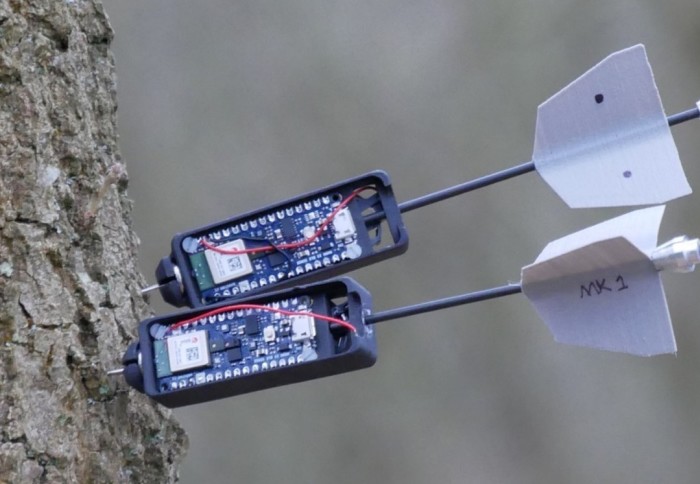
The forest patrolling drones, developed by the college Department of Aeronautics’ Aerial Robotics Laboratory, can shoot sensor-containing darts onto trees several metres away in cluttered areas like tall forests, where placing sensors for ecological monitoring can prove difficult.
Machine learning helps morphing-wing UAV land in cramped space
Equipped with cameras to help identify suitable targets and a smart material that changes shape when heated to launch the darts, the drones can also perch on branches to collect data themselves, acting as mobile sensors.
Sensors for forest monitoring are used to track changes in temperature, humidity and light, as well as the movements of animals and insects. They can also help to detect and monitor forest fires and can provide valuable data on how climate change and other human activities are impacting the natural world. It is hoped that the new drones will be used in future to create networks of sensors to boost data on forest ecosystems, and to track hard-to-navigate biomes like the Amazon rainforest.
Lead researcher Professor Mirko Kovac, director of the Aerial Robotics Lab, described the drones as “artificial forest inhabitants” that could watch over the ecosystem and collect vital data to protect the environment. Researchers have tested the drones at the Swiss Federal Laboratories for Materials Science and Technology (EMPA) and on trees at Imperial’s Silwood Park Campus. Their findings are published in IEEE Robotics and Automation Letters.
Currently controlled by people who watch through the camera lens to select target trees and shoot the darts, the next step for the researchers is to make the forest patrolling drones autonomous so that testing can be carried out in denser forest environments without human guidance.
Co-author Andre Farhina of the Department of Aeronautics said: “There are plenty of challenges to be addressed before the drones can be used regularly in forests, like achieving a careful balance between human input and automated tasks so that they can be used safely while remaining adaptable to unpredictable environments.”
Dr Salua Hamaza, also of the Department of Aeronautics, added: “Exploiting smart mechanisms and new sensing techniques we can off-load the on-board computation, and create platforms that are energy-efficient and better performing.”











Guest blog: exploring opportunities for hydrogen combustion engines
"We wouldn't need to pillage the environment for the rare metals for batteries, magnets, or catalisers". Batteries don't use rare...